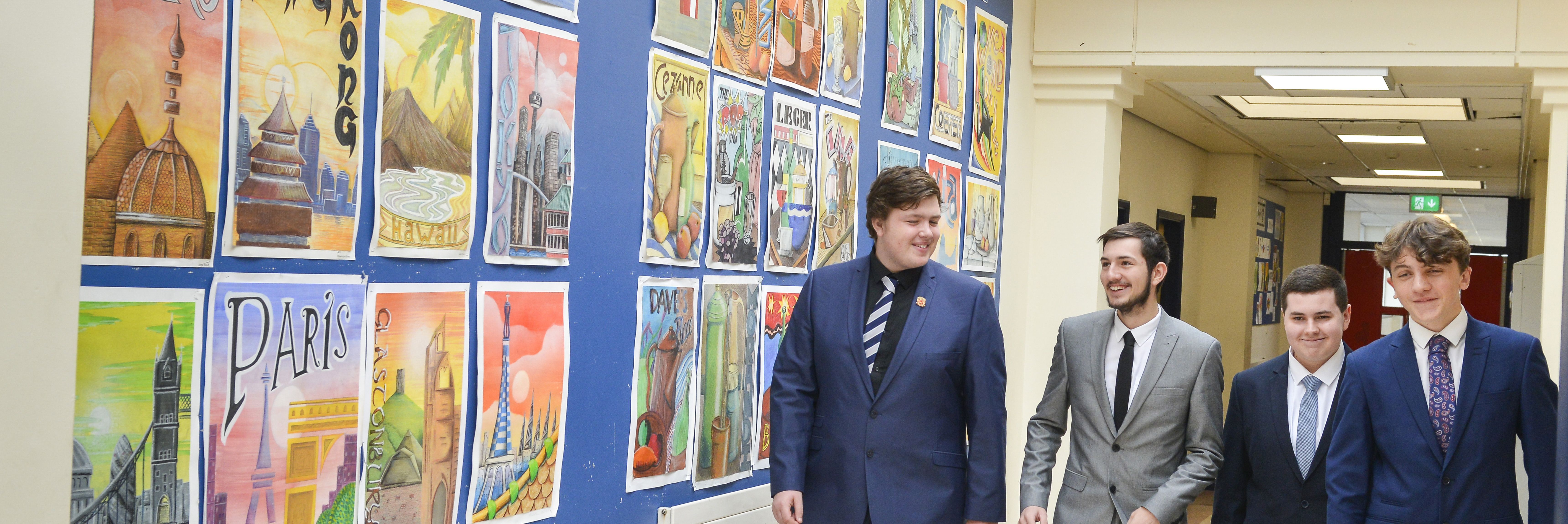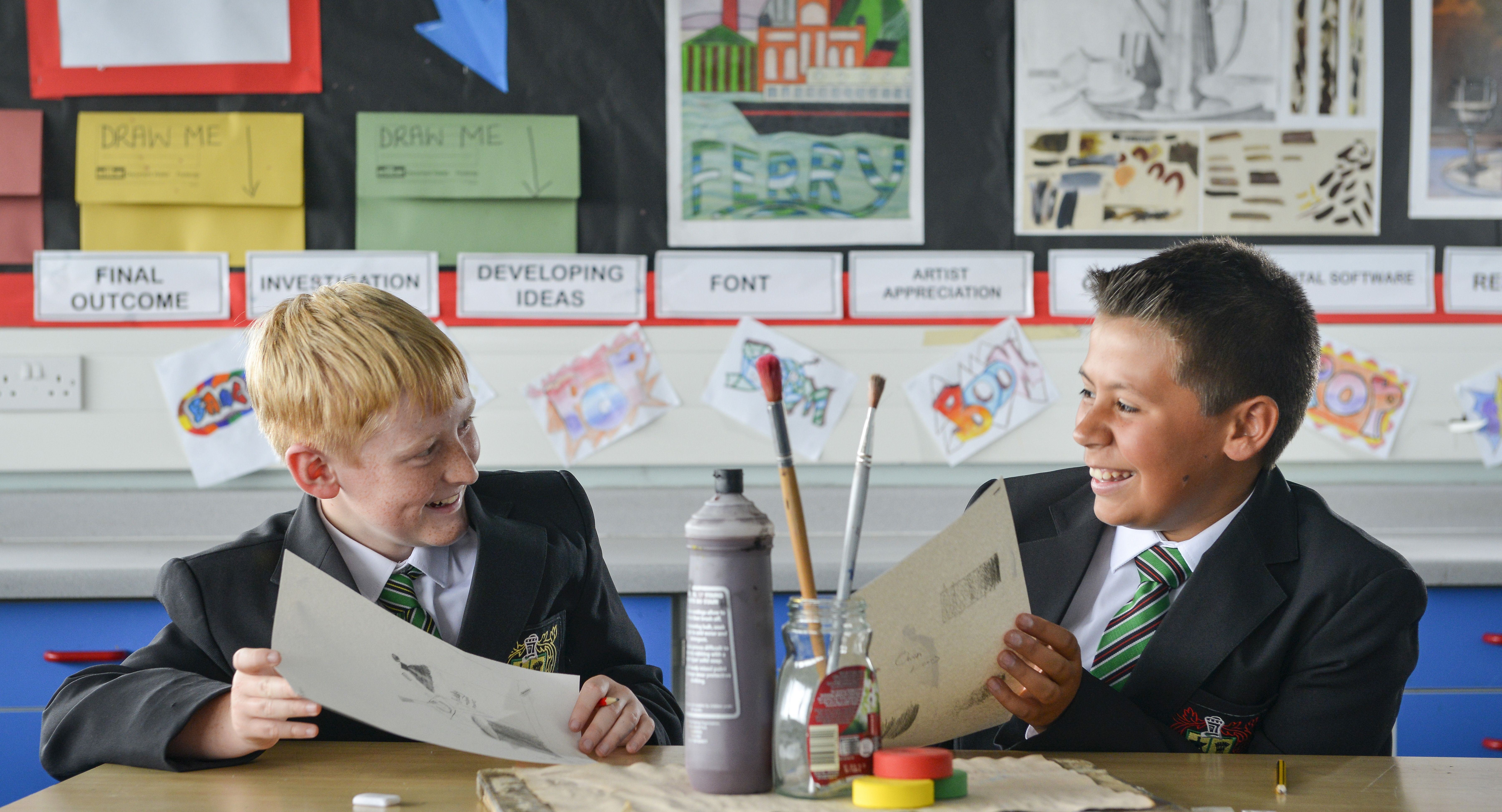Knowledge and Skills
The Knowledge and Skills overviews show the specific art and design content students will learn in each unit of study throughout the year. These documents outline both the substantive knowledge (artistic movements, techniques, and contextual understanding) and the disciplinary skills (drawing, painting, sculpture, and critical evaluation) that students will develop. Each unit is broken down to clearly identify what students need to know and what they should be able to do upon completion. Through the systematic development of both knowledge and skills, students build artistic capability, creative problem-solving, and aesthetic appreciation appropriate to their stage of learning.
Select a unit to find out more...
Formal Elements
| Unit Progress Criteria |
| Knowledge |
Skills |
- Understand and identify different types of lines (e.g., straight, curved, wavy, zigzag).
- Learn how to use lines to define shapes, create outlines, and show movement.
- Create drawings that explore the emotional and expressive qualities of different lines.
- Learn about the colour wheel, including primary, secondary, and tertiary colours.
- Understand colour theory, such as complementary and analogous colours, and how they affect mood.
- Experiment with mixing colours and creating artworks that demonstrate warm and cool colour schemes.
- Grasp the concept of tone as the range from light to dark within a colour.
- Learn shading techniques to create light, shadow, and depth in drawings.
- Create tonal drawings or paintings that show contrast using light and dark areas.
- Understand what patterns are and how they are created through repetition of shapes, lines, or colours.
- Explore the difference between regular and irregular patterns.
|
- Develop control in using various tools (pencil, pen, brush) to create different types of lines.
- Practice using lines to represent movement, texture, and boundaries in artwork.
- Experiment with expressive and technical line work in drawing and design.
- Gain proficiency in mixing paints and other media to create primary, secondary, and tertiary colours.
- Apply colour theory by creating colour schemes (complementary, analogous, warm, cool) in their artwork.
- Learn shading techniques (hatching, cross-hatching, blending) to create smooth transitions between light and dark.
- Create tonal value scales and apply these skills to render light and shadow effectively.
- Practice creating both geometric and organic patterns by repeating shapes, lines, or colours.
- Apply patterns decoratively or symbolically in their own artwork.
- Practice using techniques like overlapping, perspective, and scale to suggest depth and distance.
- Apply spatial awareness in designing layouts and placing elements within an artwork.
|
Van Gogh and Impressionism
| Unit Progress Criteria |
| Knowledge |
Skills |
- Understand the key characteristics of Impressionism, such as visible brushstrokes, light, and colour focus.
- Learn about the importance of capturing moments and impressions, rather than detailed realism.
- Learn about key Impressionist artists like Claude Monet, Edgar Degas, and Pierre-Auguste Renoir.
- Understand the social and artistic context in which Impressionism developed.
- Learn about Vincent van Gogh’s life, his influences, and his unique contribution to post-Impressionism.
- Understand Van Gogh’s use of bold colours and expressive brushstrokes.
- Explore some of Van Gogh’s famous works, such as Starry Night.
- Gain an understanding of Van Gogh’s style through recreating one of his artworks.
- Develop knowledge of colour theory by learning to mix primary colours to create secondary and tertiary colours.
- Experiment with mixing tints (adding white) and shades (adding black) to create a wide range of tones.
- Understand how Impressionist painters used subtle variations in colour to depict light and shadow.
|
- Develop the ability to create visible, expressive brushstrokes that capture light and movement.
- Practice working quickly and loosely to convey an "impression" rather than focusing on fine details.
- Build research skills by investigating the life and work of Vincent van Gogh.
- Learn to analyse and discuss Van Gogh’s artistic style, his use of colour, and his emotional expression through art.
- Enhance observational skills by closely studying and reproducing a piece of Van Gogh’s work.
- Improve painting techniques by focusing on Van Gogh’s bold colour choices and expressive textures.
- Develop proficiency in mixing primary, secondary, and tertiary colours.
- Practice creating different tones (tints and shades) to reflect light and shadow, a key feature of Impressionist work.
- Gain control over mark-making tools such as pencils and felt tip pens to mimic the short, broken strokes of Impressionism.
- Experiment with layering strokes and building texture in drawings to reflect the energy and movement of the subject.
- Learn to adapt personal images or photographs into artworks using the Impressionist style.
|
Kandinsky
| Unit Progress Criteria |
| Knowledge |
Skills |
- Learn about Wassily Kandinsky’s life, influences, and his role as a pioneer of abstract art.
- Understand Kandinsky’s theories about the connection between art, music, and emotion.
- Study the development of his style, from representational art to purely abstract compositions.
- Understand the importance of geometric shapes in Kandinsky’s work.
- Learn how to create balanced compositions using a variety of shapes (circles, squares, triangles, etc.).
- Explore how warm colours (reds, yellows) and cool colours (blues, greens) can impact the mood of a composition.
- Understand the concept of complementary colours and how they are used to create contrast and harmony.
- Learn about Kandinsky’s belief in the synesthetic relationship between music and visual art.
- Understand how different types of music (classical, jazz, etc.) can inspire various emotional and artistic responses.
- Explore how rhythm, tempo, and mood of music can influence line, shape, and colour in artwork.
- Develop an understanding of mark making as a way to express mood, energy, and texture in abstract art.
|
- Develop the ability to research and gather information on Wassily Kandinsky’s life and work.
- Improve skills in analysing and summarising key points about Kandinsky’s artistic style and influences.
- Learn how to present research in a clear and organised manner.
- Build skills in creating balanced and harmonious compositions using geometric shapes.
- Practice arranging shapes in creative ways to explore abstract design.
- Develop an understanding of how to use warm, cool, and complementary colours to create visual impact and mood in compositions.
- Enhance the ability to draw intuitively in response to different types of music, as Kandinsky did.
- Learn to translate the rhythm, tone, and mood of music into visual elements such as lines, shapes, and colours.
- Experiment with using music as inspiration for spontaneous and expressive mark making.
- Develop control and creativity with paint to produce varied marks and textures.
- Experiment with different painting techniques to create expressive marks, reflecting mood or emotion.
|












